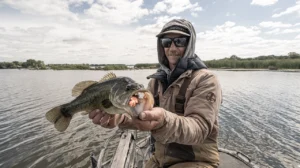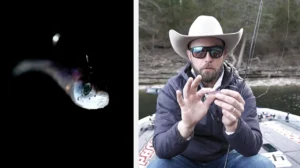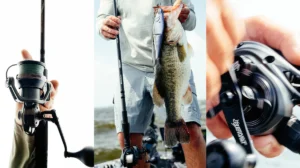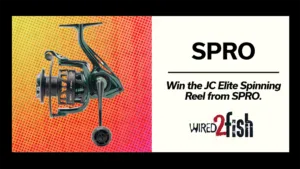Seth Feider opens the morning with calm river air, a duck boat, and fired-up largemouth that crush a frog. Feider explains why this shallow river stretch creates perfect frogging conditions. He notes how river bass use undercut banks, grass, and tight nooks to ambush prey. Because of that, he works a frog slow, steady, and precise.
Featured Product
- FROG – Walking Frog: Shop Frogs at Bass Pro Shops
- PAINT – Spike-It Worn ‘N’ Chunk Paint: Buy at Tackle Warehouse
- ROD – Daiwa Tatula Elite Casting Rod: Buy at Bass Pro Shops | Buy at Tackle Warehouse | Buy at FishUSA
- REEL – Daiwa Tatula Elite Baitcast Reel: Buy at Bass Pro Shops | Buy at Tackle Warehouse | Buy at FishUSA
- LINE – Sufix 131 Braided Line, 50-pound: Buy at Bass Pro Shops | Buy at Omnia Fishing
- SCISSORS – Rapala Elite Scissors 7″: Buy at Tackle Warehouse
Why Fall River Fish Act Differently
Feider shares how early cold nights jump-start the best river frogging windows. Bass respond quickly when fall arrives. He compares the shift to early warm days in spring. Both cues tell fish to feed. Consequently, each cast can produce heavy, tall river bass holding tight to current seams. He stresses the importance of thorough casts. Even though the frog does not sit in one place for long, he still hits every pocket. River fish often sit in tiny cuts, facing upstream, waiting for an easy meal. Random casting misses those fish, so methodical coverage matters.
Feider’s Custom Frog Setup
Feider modifies his frog to boost noise and calling power. He inserts a trimmed toad tail, cuts ports for the body, and creates a louder profile. This hack helps fish locate the frog through current, grass, and dirty water. He also uses a shorter rod for accuracy during close-range casting. Most strikes happen within 20 feet of the boat. Because of that, he prefers a shorter setup rather than a long, heavy mat rod. The shorter rod helps him pitch into tight cover and react quickly when a bass unloads on the frog.
The Orange-Head Frog Tip
Feider ends with one of his favorite tips: painting the frog’s head blaze orange. This lets him watch the bait like a bobber. When the orange disappears, he knows the bass truly has the frog. This simple detail dramatically increases hookup percentage, especially with natural-colored frogs where bites can be hard to read.
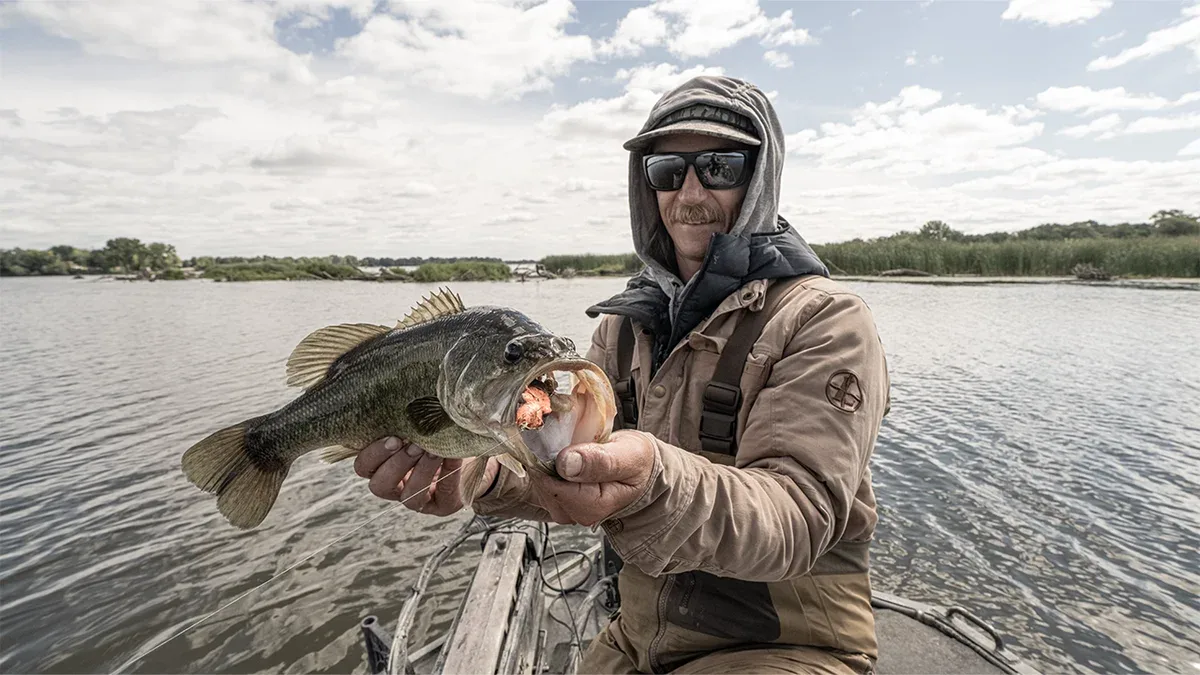

![[VIDEO] Why Weight Size Matters with FFS Baits](https://www.wired2fish.com/wp-content/uploads/2025/11/cifuentes-website-300x169.webp)
![[VIDEO] Fall Topwater Fishing Tips from Dustin Connell](https://www.wired2fish.com/wp-content/uploads/2025/11/connell-topwater-300x169.webp)
![[VIDEO] Trailer Hitch Maintenance Made Simple](https://www.wired2fish.com/wp-content/uploads/2025/11/peterson-hitch-300x169.webp)
![[VIDEO] Huff’s 3 Must-Have Baits for Bass](https://www.wired2fish.com/wp-content/uploads/2025/11/huff-website-300x169.webp)
